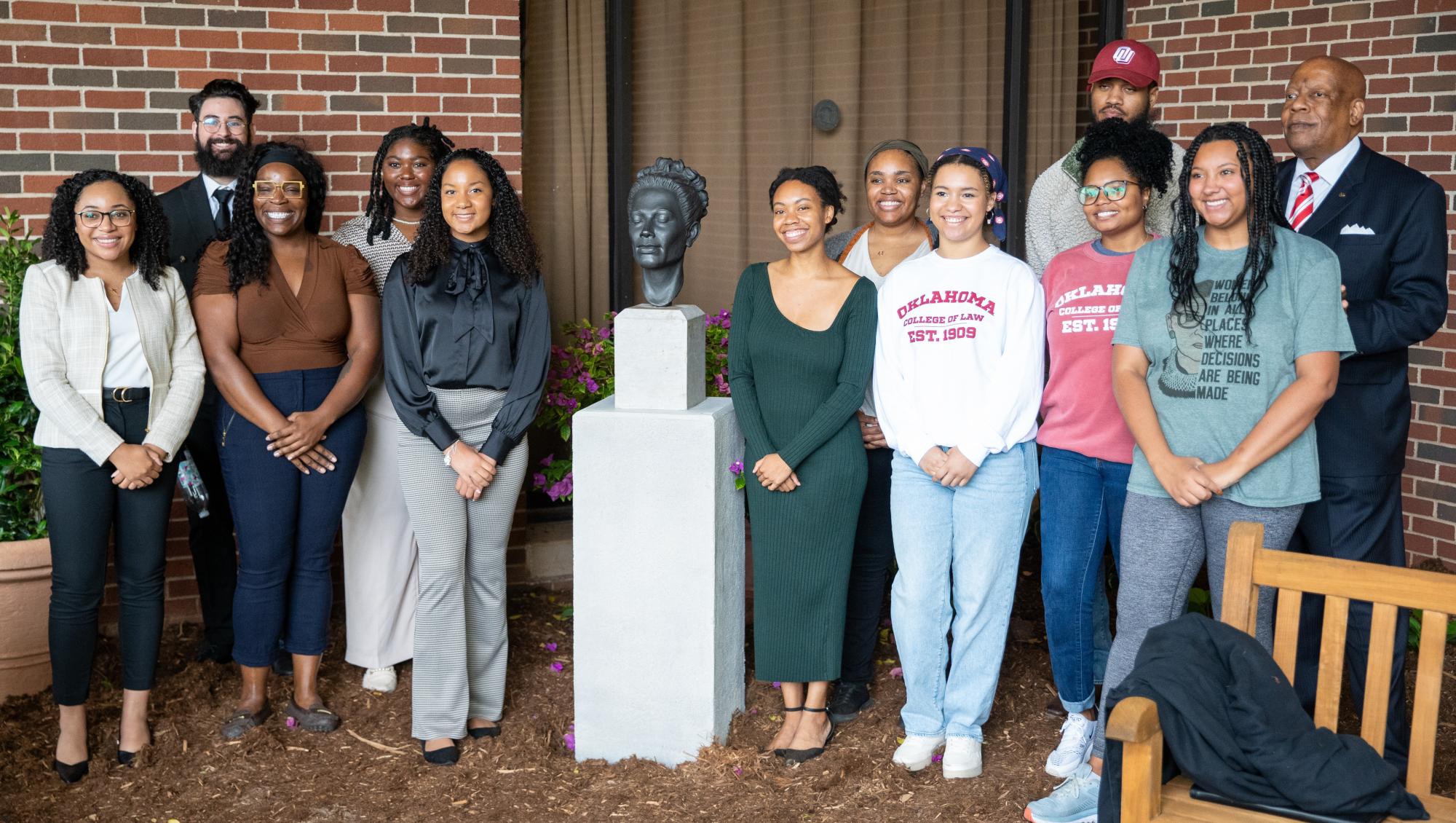
In a tranquil corner of the grounds of the University of Oklahoma College of Law sits a bust of a woman, her eyes closed in silent reflection and concentration.
The bust is a sculpture of Ada Lois Sipuel Fisher, the first Black woman to attend the University of Oklahoma College of Law. The artist who teased the delicate curls of hair and the smooth complexion of the subject is Sohail Shehada, a professor of sculpture and drawing at OU.
“Dean Guzman said she wanted a sculpture of Ada Lois Sipuel Fisher. She saw what I had done and liked it,” Professor Shehada said. That was the beginning of the process that culminated in the sculpture’s placement in the Ada Lois Sipuel Fisher Garden.
In order to capture the moment of calm reflection, professor Shehada began by learning about Ada Lois Sipuel Fisher.
In 1946, Ada applied to the University of Oklahoma College of Law. Though her academic prowess was never in question, she was rejected because the law of Oklahoma at the time prohibited integrated classes. The resulting lawsuit would take three years to work its way through the court, finally ending up in the United State Supreme Court where it was determined that Ms. Fisher should have the same education opportunities other Oklahomans.
The Ada Lois Sipuel Fisher bust was unveiled on Oct. 26, 2023.
It was her cool determination that Sohail Shehada sought to capture in his art.
Professor Shehada teaches classes in sculpture and drawing at the university and has developed two courses for the university’s African Studies program.
He said his first step in creating a bust is to research the person. When he was initially approached about creating a bust of fisher, he was already working on a sculpture of famed Black opera singer Marian Anderson, who also battled segregation and prejudice.
“She was denied the opportunity to sing in Constitution Hall in Washington,” Shehada said. “So she sang at the Lincoln Memorial on Easter Sunday.”
“Whenever I do a bust, I research the subject. I read articles about Ada Lois and I wanted to capture that reflective moment. I wanted her to seem at peace and calm,” he said. “The garden is such an intimate space. It’s peaceful and reflective.”
The sculpture is the second of his pieces to grace the grounds of the law school.
His first piece is a massive limestone sculpture done, he recalls, at the behest of then-President Boren.
The piece celebrates the history and enduring nature of the law. An inscription reads: “Each generation in its turn must protect and preserve the rule of law. This sculpture by Sohail Shehada trace the changing face of the legal profession from a small elite group of men in earlier centuries to a broadly diverse group of men and women of all cultural and economic backgrounds as we begin the third millennium. It reminds us that not just the privileged few, but all of us must be steward of the law if it is to endure.”
As Professor Shehada speaks, the parallels between art and law become clear. His students, like the students in the law school, come in with raw talent that is then shaped and honed.
“It’s your role to guide them. You give them the foundation and then you see how far they can take it,” he said. “You can teach them how to do it, but they have to have that passion. It takes time, effort and energy. Eventually the practice pays off.”
